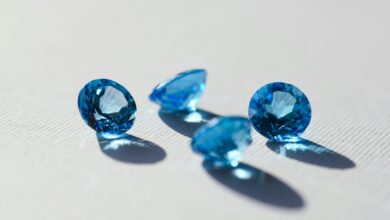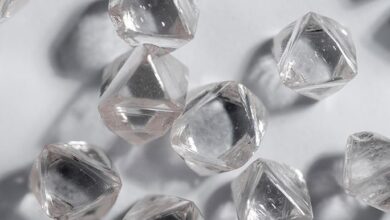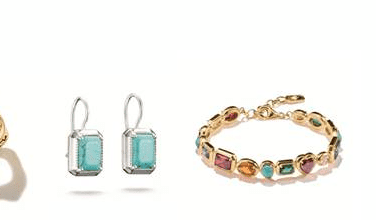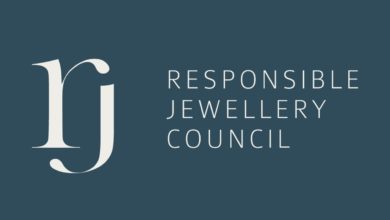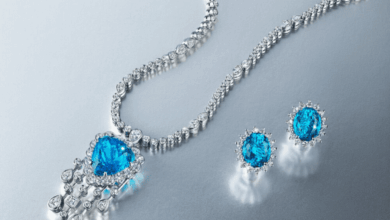Could the GIA’s diamond detector save the diamond industry?

Register to get 1 free article
Reveal the article below by registering for our email newsletter.
Want unlimited access? View Plans
Already have an account? Sign in
The Gemological Institute of America (GIA) has created a new device which it says is more effective than anything else in the market at detecting synthetic diamonds. Will the new technology be the silver bullet the industry needs to solve this problem? SHEKINA TUAHENE speaks to Tom Moses, executive vice president of the GIA, to find out.
In April, the Gemological Institute of America (GIA) announced that it had been working on a synthetic diamond detector which can screen lab-created stones even when they have already been mounted in jewellery. Most screening devices currently available are only able to detect the authenticity of loose stones.
Synthetic stones and diamonds have their place and can be a cost-effective alternative to the customer – some may prefer to go for lab created stones to avoid the risk of paying for an item which may associated with conflict, unlawful work conditions and harmful emissions.
But while there are many consumers willing to buy a synthetic stone over a natural one, this has not eliminated the potential risk of fraudulent trading. Issues arise when the true nature of man-made or ‘peppered’ stone is not disclosed, and the product is sold as ‘natural’, tricking jewellers and customers alike into overpaying for the gems.
The reputational damage such malpractice can do to the above-board diamond manufacturers, traders and retailers cannot be overstated. In a 2013 report by Rapaport, chairman Martin Rapaport noted that some manufacturers were going as far as to purchase GIA grading reports and creating a stone which matched the features. Some even went to the lengths of inscribing stones with the GIA logo and grading report number.
With the rapid developments in technology and synthetic manufacturers willing to do more to pass off man-made stones as natural, it was perhaps only a matter of time before the GIA felt the need to create a new device aimed specifically at solving the problem. With its gem tester due for release later this year, the GIA claims it will provide the jewellery industry with an easy-to-use piece of equipment that can separate “100% of stimulants and synthetic diamonds from natural diamonds”.
Tom Moses, executive vice president and chief laboratory and research officer at the GIA, said the device, which comes after decades of research, was “responding to [the] need” of retail jewellers to have a definitive method of separating “natural diamonds from simulants and synthetics mounted in jewellery.”
As technology progresses, the GIA has attempted to keep up with the changes by creating a device it says has more capabilities than many others on the market. The desktop gem tester uses advanced spectroscopic technology to screen the quality of natural, treated and synthetic diamonds, making it one of the most effective testers available. It can also deter those who commercially treat natural diamonds to alter their colou,r as it has the ability to separate as many as “50% of High Pressure-High Temperature (HPHT)” diamonds.
The threat of high quality synthetic diamonds remains prominent – only recently the GIA analysed a stone which it reported as having a “rare combination” of nitrogen and boron defects. The GIA claimed that it has never encountered such a stone before, which only serves to highlight the increasingly advanced methods used in the production of synthetic diamonds.
The examined ‘hybrid’ gem was a natural stone with a synthetic blue coating and was being marketed as a natural fancy-blue diamond. The GIA admitted that the due to the uncommon nature of the stone, there was a possibility that similar stones could create future challenges for “colourless and near-colourless diamonds” as methods of creating them improve.
However, the GIA said remains assured of the capability of equipment it has produced to weed out such specimens, and when asked if the new device could keep up with such progression, Moses suggested that the institute was “confident in [its] ability to definitively detect all synthetic diamonds,” despite a recent “increase in the production and quality” of them.
Although the GIA says it has not seen such a stone before and was shocked at its make-up, the discovery of the ‘hybrid’ gem may provide some sort of comfort to jewellers as the institute was able to detect its inauthenticity as well as alert the industry of its existence.
While Moses acknowledges that synthetic diamonds have their place in the industry as long as they are disclosed, the innovative development of creating them could possibly mean a higher number of man-made stones passing through the trade as natural.
To lessen the threat of the practice to the whole industry, the GIA has made sure that the device is relatively affordable to most in the sector. Moses says: “When it goes on sale later this year it will be priced to be accessible to the trade – likely in the range of $4,000-5,000 (£3,000-3,800).” While this may seem costly for smaller businesses and start-ups, Moses insists the benefits will be invaluable: “[It will] help give the trade greater confidence in the characteristics of the diamonds they buy and sell.”
It is also significantly cheaper than current testers on the market which can go for as much as $55,000 (£42,300). Synthetic diamonds, when sold legitimately, cost anywhere between 20–50% less than natural ones so the potential overspend to jewellers when buying falsely marketed ones can greatly outweigh the amount spent on the new equipment.
Retailers and manufacturers should not expect this to be an alternative to GIA testing however – Moses notes it will be “less complete” than sending a gem in for examination at a professional lab. Instead, it seems more likely that the device will act to confirm or deny suspicions and determine a stone’s inauthenticity without a full run down of its make-up.
But for most retailers and manufacturers, to simply know that a diamond is not completely natural may be all the information that they need and they can then send it off for further testing if desired. It can also make it easier and help alleviate concerns about smaller diamonds (0.30 carats or less) which the GIA reports as being less likely to be submitted for testing.
Those who work in the industry will not be the only ones who benefit from the use of the equipment, as the GIA says the knock-on effect of using the device will lead to the protection of consumers and a preservation of their trust in gems and jewellery.
“Exhaustive testing” has gone into the development of device; the GIA creates its own synthetic gems and examines millions of diamonds per year to better its techniques at spotting them. The knowledge that precedes the device is comprised of decades of examination, and considering researchers Frost and Sullivan predict that the production of synthetic diamonds would “probably jump to 2 million carats in 2018 and 20 million carats by 2026”, the need for an effective means of testing to reduce the trading of undisclosed stones will continue to grow. Moses says that ultimately, “to ensure the public trust in gems and jewellery” is the GIA’s mission.
As synthetic diamonds continue to threaten the integrity of manufacturers and jewellers and harm the consumer, the GIA simply wants the device to serve the diamond industry for the greater good. Moses says its hope is to “ensure that all synthetic diamonds – and all diamond treatments – are fully disclosed at every step of the supply chain all the way to the ultimate consumer.”
With the tester due to be released later this year, there is every chance that as long as the organisation works to develop its product at the same speed that synthetic manufacturers develop theirs, it has the potential to drastically reduce the proliferation of undisclosed treatments.


